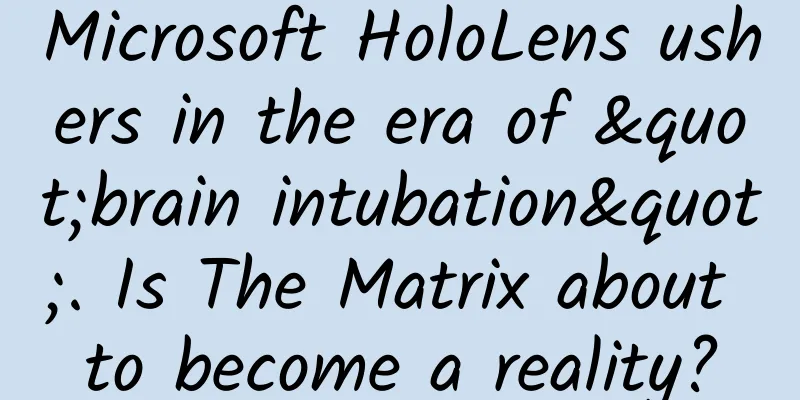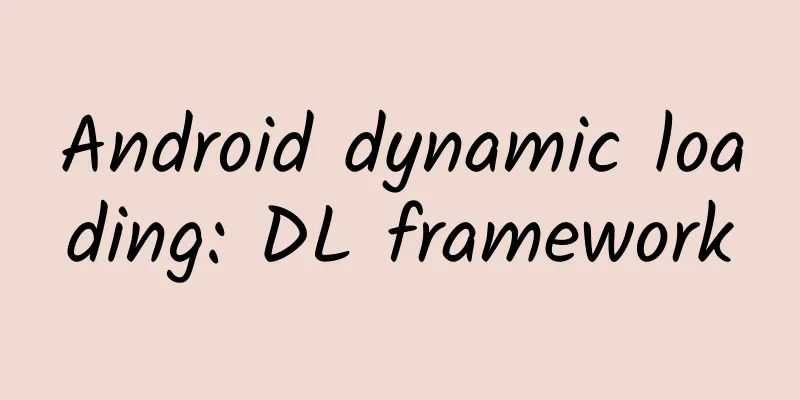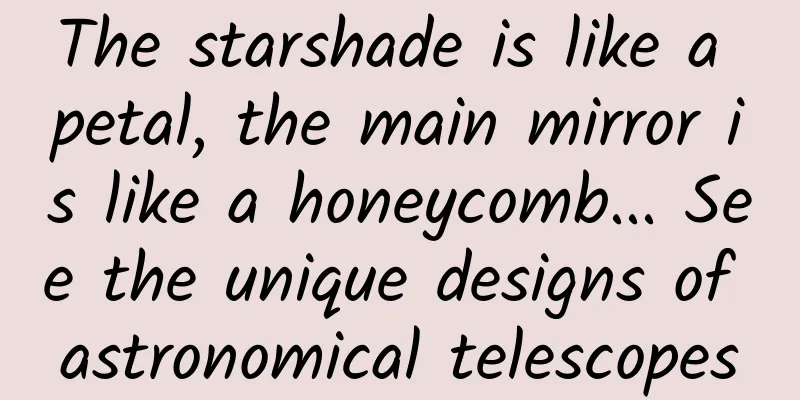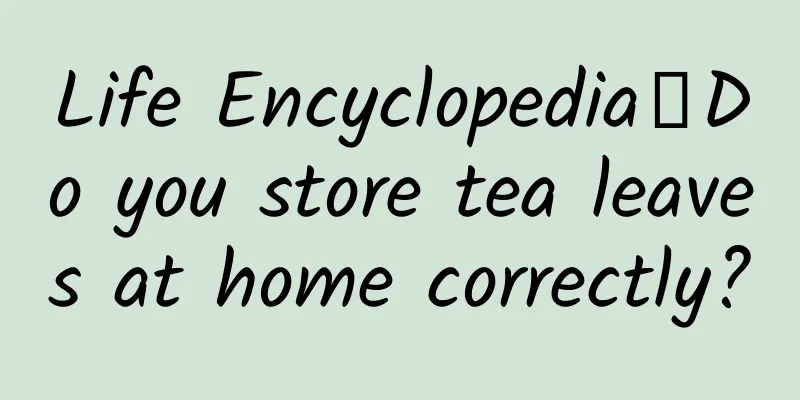Microsoft HoloLens ushers in the era of "brain intubation". Is The Matrix about to become a reality?

|
I believe that those who have watched "The Matrix" or "Ghost in the Shell" will have a deep memory of the concept of "brain insertion" in the works. A cable connected to the brain can completely take over the brain's sensory nerves. Everything you see, hear, smell, and touch is completely simulated by the computer, which even raises the question of "Is the world we live in real?" As for why the computer does not directly take over the logical neural circuit, resulting in the protagonist Neo's chance to successfully counterattack? Don't ask me, ask the screenwriter (manual eye roll). Science fiction and science are not far away In fact, there are more and more such works. "The Matrix", "Source Code", "Detective Conan: The Phantom of Baker Street", "Sword Art Online" and so on are all excellent works starting from this concept. But if you just regard this as an illusory science fiction element, you are wrong. Jules Verne, a famous writer in the 19th century, is the originator of science fiction novels and is also known as a great scientific prophet. The inventors of inventions such as submarines and telegraphs all claimed that they were influenced by Verne's works. Verne's works also predicted high-tech products that people could not imagine at the time, such as airplanes, space travel, and television. Similarly, the seemingly nonsensical setting of "brain intubation" actually has a profound technical demand, that is, the demand for human-computer interaction, which has not made any substantial progress in so many years. The keyboard has a history of 400 years, the mouse has been around for more than 50 years, and the appearance of the monitor can be traced back to more than a century ago. With the rapid development of computer technology, the poor human-computer interaction method has actually become a stumbling block to the further development of technology. This is also the reason why AR, VR, MR, voice recognition and other technologies have developed rapidly in the past two years. Compared with the typing speed of 60wpm (words per minute), the normal speaking speed of 180wpm is undoubtedly much higher. After the voice assistant technologies such as Siri and Xiaona are truly mature, the input speed will be taken to a higher level. AR can attach information to the real scene and show it to users more intuitively, reducing the user's understanding cost. VR can place the human-computer interaction interface in a virtual three-dimensional environment, greatly increasing the amount of information in the interface. MR is a technology that combines AR and VR. AR currently has no mature software and hardware support. It has recently become well-known because of the mobile game "Pokemon Go" jointly developed by Nintendo and Niantic. VR is currently only used in the field of video games. Consumer products include Oculus Rift, HTC Vive and the upcoming PS VR. The most well-known MR product should be Microsoft's HoloLens. Real-world "brain intubation" HoloLens is a mobile computer device released by Microsoft in January 2015. It is equipped with Windows 10 system and combines AR, VR, voice recognition, gesture recognition and other technologies in human-computer interaction. AR and VR take over vision and hearing, and head tracking, position tracking, voice and gesture recognition enable HoloLens to respond to user actions. It can be said that HoloLens is the product closest to "brain intubation" at present. HoloLens has received a lot of attention since its release, and both industry insiders and gamers have shown extraordinary interest in it. Although the developer version of HoloLens has just been shipped and costs as much as $3,000, enough to buy several HTC Vives, the concept of "brain intubation" is still irresistible. Although not yet released, the problem has already appeared In fact, the implementation principle of HoloLens is not complicated. It can be simply understood as a portable computer with two transparent screens and a few Kinect somatosensory cameras on the front. It is not easy to condense these hardware into a small head-mounted device, but it must be said that as a first-generation product with a cross-era concept, HoloLens still has many flaws. For example, as a headband computer with a complete Windows system, the battery life problem, the wearing comfort problem caused by excessive weight on the nose bridge, and the low accuracy of voice, gesture, and position tracking all greatly reduce the user experience. The biggest problem is the screen of HoloLens, which is very fragile and needs careful care. By the way, the black glass on the front is not a screen, but only serves to reduce external light and protect the internal display screen. The field of view of the two internal displays is too narrow, and the holographic images close to the edge will begin to blur. The narrow field of view also reduces the real effect of MR. Will “brain catheterization” really become the sword of Damocles hanging over humanity’s head? Although the developer version of HoloLens still has some flaws, and it is difficult to truly realize our ideal of "brain insertion" and direct communication between computers and human consciousness, we have indeed taken another step on this road. But then again, does the realization of "brain insertion" represent the direction of technological progress? Works such as The Matrix all show how humans are controlled, driven, and enslaved by computers after the realization of the "brain insertion" technology. Recently, scientists such as Hawking and Musk have been constantly warning people that artificial intelligence may become the main cause of human extinction in the future. Even if artificial intelligence does not rebel in the future, who can guarantee that this technology will not be used by people with ulterior motives to brainwash people terribly? Perhaps, the human brain is really the domain of God, and we should stay away from it. As a winner of Toutiao's Qingyun Plan and Baijiahao's Bai+ Plan, the 2019 Baidu Digital Author of the Year, the Baijiahao's Most Popular Author in the Technology Field, the 2019 Sogou Technology and Culture Author, and the 2021 Baijiahao Quarterly Influential Creator, he has won many awards, including the 2013 Sohu Best Industry Media Person, the 2015 China New Media Entrepreneurship Competition Beijing Third Place, the 2015 Guangmang Experience Award, the 2015 China New Media Entrepreneurship Competition Finals Third Place, and the 2018 Baidu Dynamic Annual Powerful Celebrity. |
<<: Yahoo's closure should serve as a wake-up call for its Chinese peers
>>: Zhongguancun's changing face: the end of an era that once made people love and hate it
Recommend
3 store owners share their own experiences to reveal how tricky the Double Eleven shopping spree is.
What can you think of on 11.11? Is it Singles'...
What do animals do when the weather gets cold? They have some unique ways to survive the winter!
In the cold winter, people often shiver with cold...
As interesting as the short track speed skating competition is Wang Meng's commentary! Do you really know short track speed skating?
In the short track speed skating mixed team 2000m...
I give five thumbs up and four thumbs down to the TV Game Lobby
For ordinary users, the TV gaming experience does ...
APP user operations: attract new users, promote activation, and gain return traffic!
I have shared many times how to develop the mobil...
China Passenger Car Association: Retail sales of new energy passenger vehicles reached 486,000 units in July 2022, a year-on-year increase of 117.3%
Retail: In July 2022, the retail sales of passeng...
MINISO’s marketing + traffic strategy!
The changing times bring about a change in the ma...
Director Tang of Meitan Academy: "How to Explode the Beauty Industry from 0 to 1 and Make Millions of Dollars from Douyin Local Accounts"
Director Tang of Meitan Academy: "How to Exp...
In this park, we don’t plant trees, we let nature plant them.
I believe that all the workers are like me. Repea...
Lift your feet! Clap your feet! The fat on your side will snap off! Even Liu Genghong can’t overcome “sports fatigue”!!!
Audit expert: Wang Linyu The Second Affiliated Ho...
World Autism Day: Caring for “Children from the Stars”
They live among us But I have a heart that can on...
If you see this kind of flower on the road, please report it immediately and remove it!
If you see this kind of flower on the road, pleas...
How to create user portraits and find accurate users?
Two nights ago, a young girl who had just started...
What's on your mind but you can't remember it? Sorry, I'm "TOT"
You are chatting with your friends and suddenly y...
Dangbei Smart Box Z1 Pro Review: A collection of cutting-edge technologies that redefines the concept of "TV box" products
With the increase of Internet film and television...









